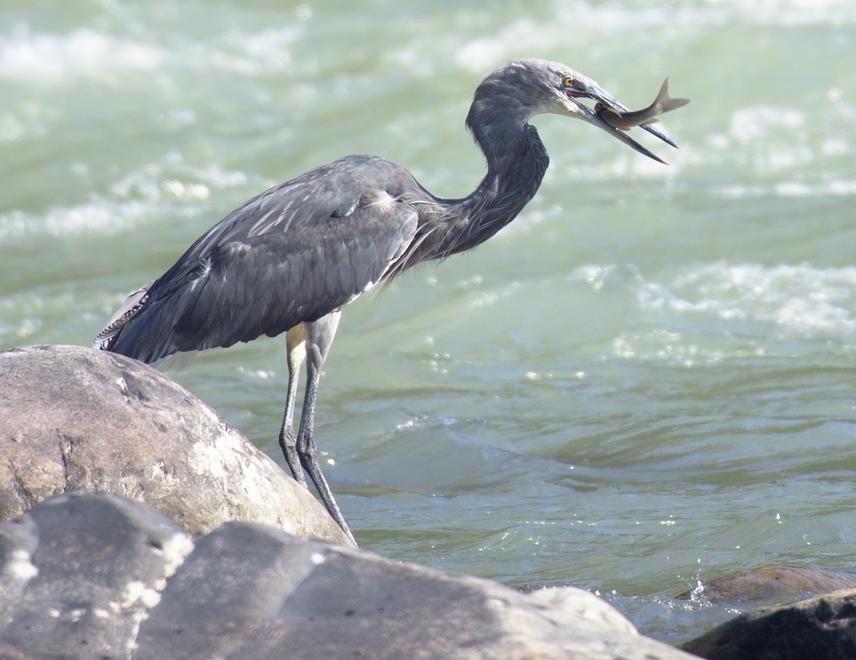Pema Khandu
Other projects
13 Feb 2020
Roost Site Selection, Behaviour and Threat Assessment of Critically Endangered White-bellied Herons (Ardea insignis) in Bhutan
17 Apr 2025
Assessing Critical Habitats Using Environmental DNA (eDNA) to Conserve the World’s Rarest Heron, the White-bellied Heron (Ardea insignis) in Bhutan
Knowing about the foraging activity patterns of White-bellied Herons bears immense significance in ecological studies. Foraging success determines reproductive success and the survival of the juveniles and adults. Therefore, there is an urgent need to carry out this study as much less is known about White-bellied Herons' (WBH) foraging ecology. The study will be undertaken in two confirmed habitat of WBH in Bhutan; Mangde-chu and Punatsang-chu river basins. Focal animal sampling and non-invasive DNA sampling approaches would be employed to generate insights into the micro-habitat selection, prey type and biomass intake, seasonal and daily foraging activity patterns of the WBH.

White-Bellied Heron.
Very little information is known about WBH and its foraging activity. Overall, numerous aspects in foraging ecology of the WBH are left unexplored (Maheswaran, 2007). Understanding of the factors which affects the foraging activity of WBH such as micro-habitat selection, breeding period and time of the day is scanty (Price and Goodman, 2015). Much less is known about the foraging activity of White-bellied Heron (Ardea insignis) compared to other species of same genus (Wangchuk, 2016). Thus knowing about its' foraging activity is imperative both from an ecological and conservation point of view.
Continuous focal sampling method would be employed for the daily observation of the foraging activity of the WBH. The factors affecting the foraging activity patterns are grouped into following categories. Microhabitat types; Islands, Banks, Ponds, Riffle, and Pools. The breeding period; incubation (February-March), nestling (April-May) and fledgling (July-August). Time of the day; early morning (06:00-09:00 h), midday (10:00-13:00 h), late evening (14:17 h). At each sampling site, physicochemical parameters of water such as width (m), depth (m), velocity (m/Sec), substratum, and temperature would be measured following the standard technique for measuring these variables would be followed (Pusey et al., 1993; Bhatt et al., 2012). Prey availability is the measure of prey abundance and vulnerability. Abundance will be determined by estimating the relative density (catch per unit area) of the prey and the prey vulnerability would be estimated through the degree of exposure of prey to the predator (Breed and Moore, 2016). Non-invasive genetic sampling of fecal samples would be carried out by opportunistic collection from night roosting and nesting sites during the early hours, and will be preserved in 100% ethanol after collection and stored at room temperature. Feather samples would be collected (dropped by some birds) to provide samples of their DNA and stored in dry Eppendorf tubes at room temperature.
This study would provide a very important baseline data as Bhutan begins to implement the captive breeding program for the WBH at the end of 2019. Embark on creating awareness on the importance of WBH in the ecosystem as an indicator and umbrella species. Take a step closer in achieving one of the main visions of White-bellied Heron Conservation Strategy 2015 by filling up a huge research gap.